The human-occupied vehicle (HOV) Alvin conducted three dives within the Davidson Seamount Management Zone on March 26, 27 and 28, 2019. Dr. Jason Sylvan (Texas A&M) and two pilots completed the first dive on March 26 to a depth of 3250 meters at the “Octopus Garden,” which was originally discovered in October 2018 during Monterey Bay National Marine Sanctuary’s research cruise aboard the E/V Nautilus. This discovery garnered significant international media exposure, and the BBC worked with Woods Hole Oceanographic Institute and associated personnel to visit the “Octopus Garden” for purposes of broadcasting live from the R/V Atlantis during the BBC’s “Blue Planet Live” week-long nightly show that aired in the UK and Canada. The second dive on March 27 took Chad King (MBNMS) and two pilots to a depth of 1,400 meters to the summit of Davidson Seamount where large bubblegum corals (>3 meters across) were observed and recorded. The third and final dive took Chad King and two pilots to a depth of 3,241 meters back to the “Octopus Gardens.”
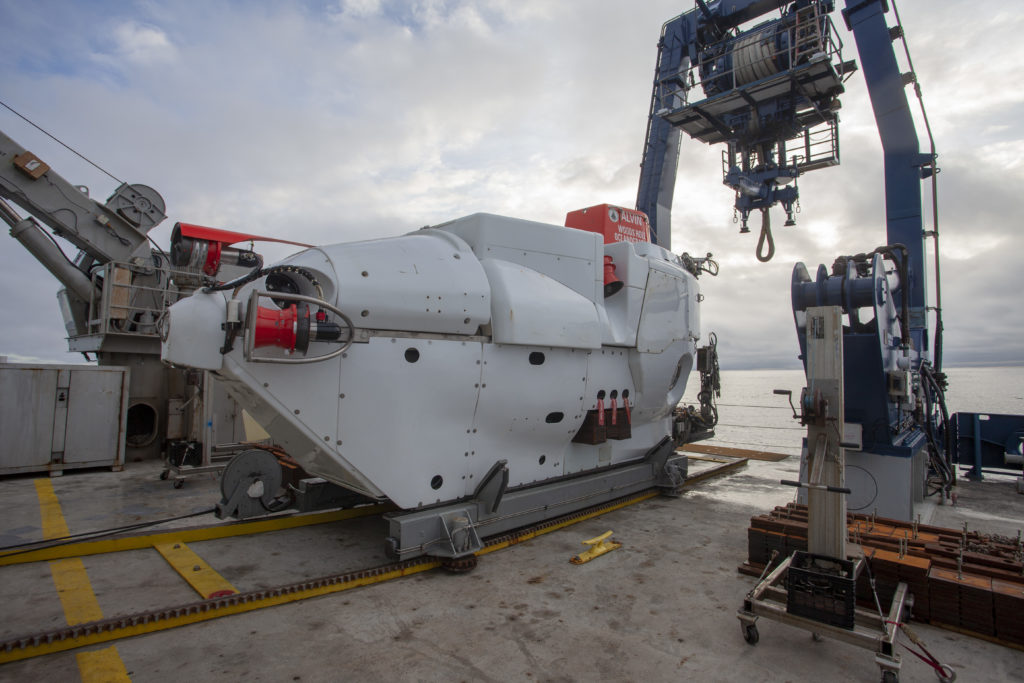
Several new aggregations of octopuses from the genus Muusoctopus totaling in the hundreds were discovered , and it was confirmed through measurements, that the shimmering water diffusing out of the faults and pools where these octopuses and other animals congregate was up to 10 degrees Celcius, which is about 8 degrees higher than the surrounding ambient bottom seawater. Water, biological and rock samples were taken, and a bacterial trap was set out for 48 hours before being collected. All samples have yet to be analyzed.

The dive at the summit of Davidson Seamount revisited large bubblegum corals that MBNMS and BBC visited in 2006. Imagery from these corals appeared in BBC’s “Blue Planet” in 2007.


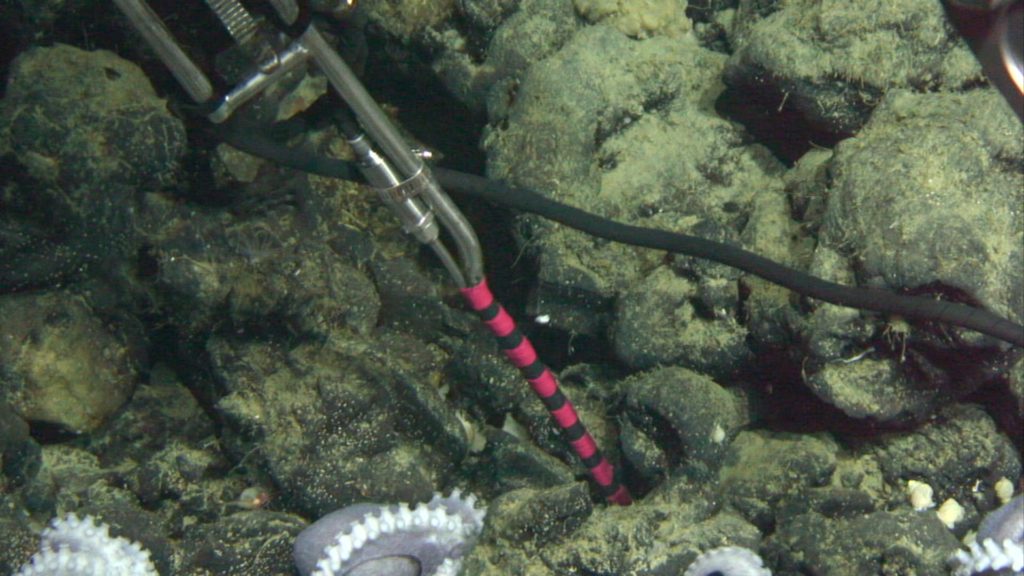
(Photo: Woods Hole Oceanographic Institute)
We observed eggs at different stages of development, from (presumably) newer opaque white eggs to eggs with fully-formed octopuses visible inside. Shortly after these observations, we observed a newly-hatched octopus swimming near the Alvin, and within minutes, we recorded an octopus the moment after hatching from an egg. These observations are evidence that this population is reproductively viable. In a similar system near the Dorado outcrop near Costa Rica, eggs have yet to show any indication of development despite several visits years apart. It is also assumed that the brooding time for this species is at least two years, but the total time is unknown.
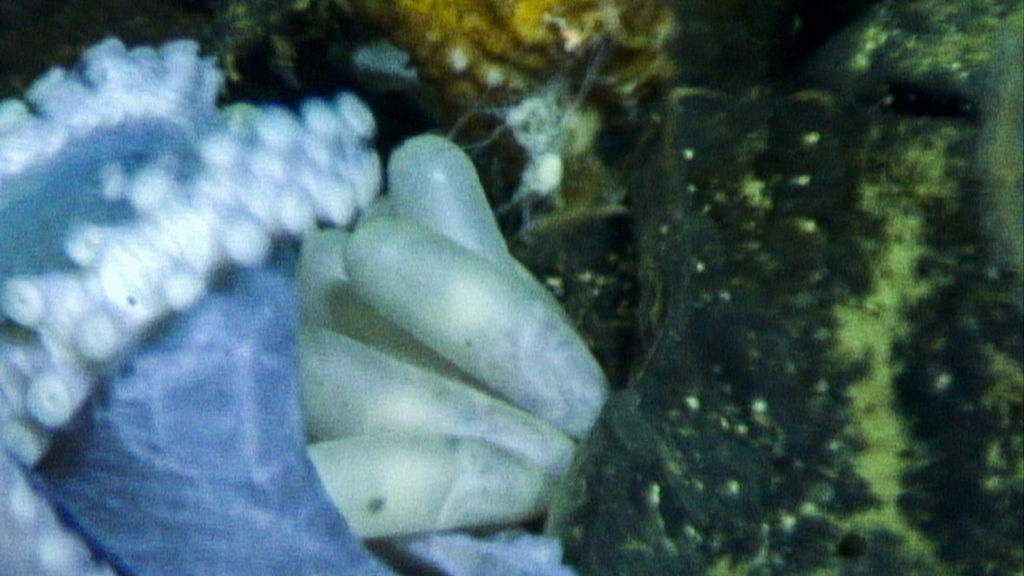
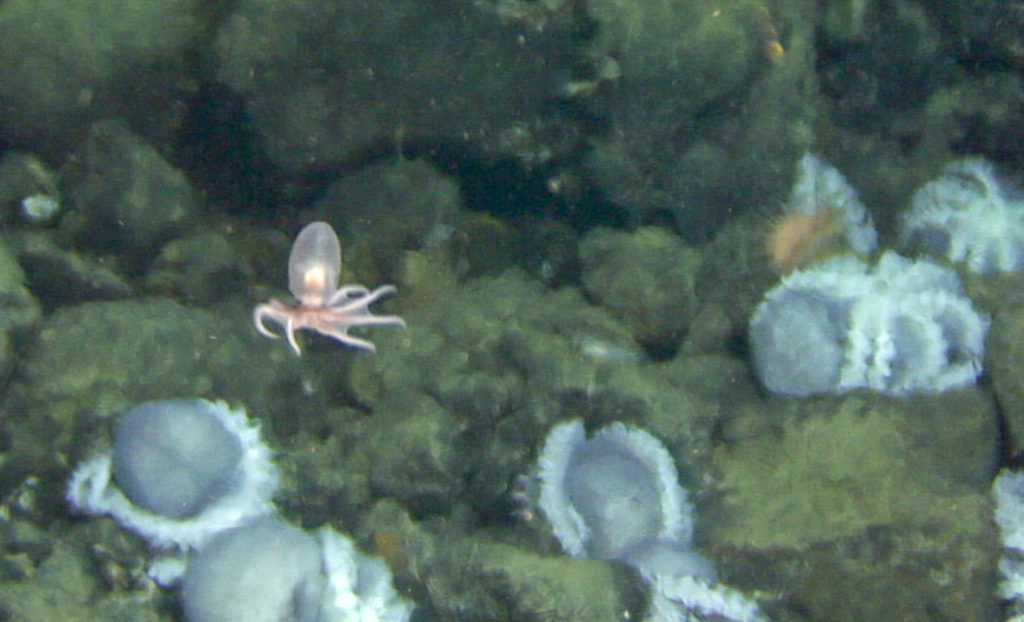
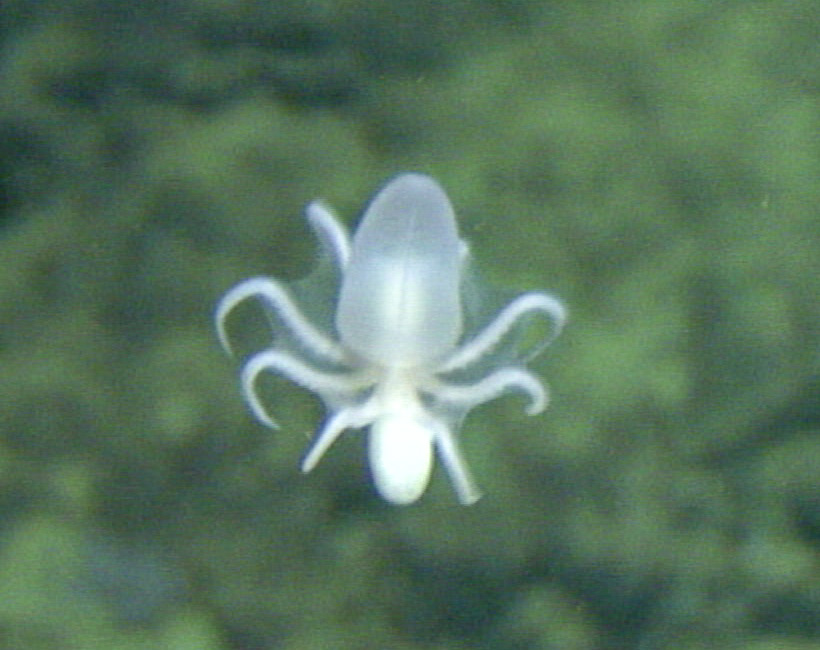
MBNMS scientists will be revisiting this site in October 2019 aboard the E/V Nautilus to further survey the area and collect more measurements to try and begin to understand this unique and newly discovered ecosystem within Monterey Bay National Marine Sanctuary. To follow along LIVE with this expedition, please visit the Nautilus expedition page.